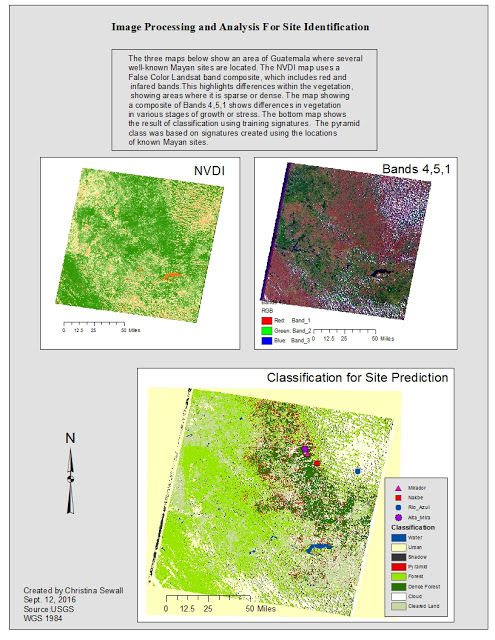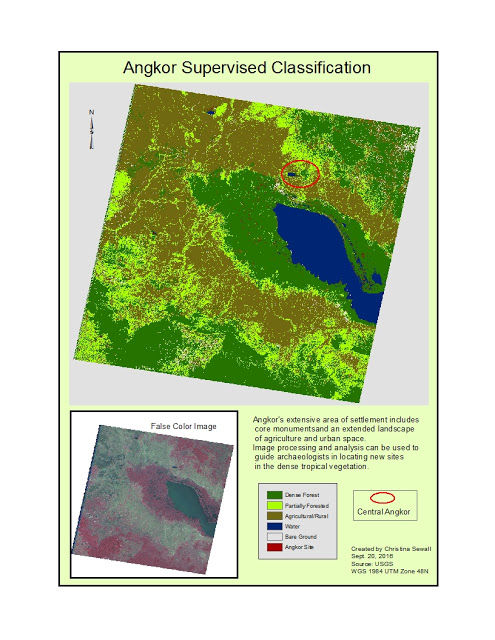Christina Sewall
GIS Portfolio
Predictive Modeling

Various band combinations are used to bring out areas that are bare or have sparse vegetation. It can also highlight dense vegetation. The bottom map shows the results of supervised classification. First a training signature file was created by drawing polygons around samples of each class. Known Mayan pyramid sites were used to create this class's sample. The classification shows the locations of possible new sites, and creates a tool to be used in survey and ground-truthing.

In Cambodia, where many monumental stone structures are hidden in the dense tropical vegetation, and where land mines and unexploded bombs pose a threat to those conducting ground survey, it is possible to use training samples to classify images for the identification of previously unknown sites.

Predictive modeling can be a useful tool for archaeologists trying to narrow down likely areas where cultural resources may be found. Environmental factors such as proximity to water, soil and vegetation types, elevation, slope, and aspect (which direction a slope faces) are understood to have some value in predicting where settlement and activity occurred in the past. Models can be used to narrow down areas where field survey is more likely to find cultural remains.

A mosaic Digital Elevation Model shows the variation in elevation in the region of Siberia where Scythian burial mounds are located. By examining the characteristics of the landscape, it may be possible to understand the reasons why the burial mounds were located here.

These maps show a pattern of location characteristics favored by the builders of the mounds. This information can be used to better understand the experience of those who built the mounds and for people for whom the mounds were part of the landscape. It can also help predict where other mounds may be located.

Models are used to identify trends and to see relationships between the dependent and explanatory variables. The results of this analysis showed that all three explanatory variables were contributing to the model.